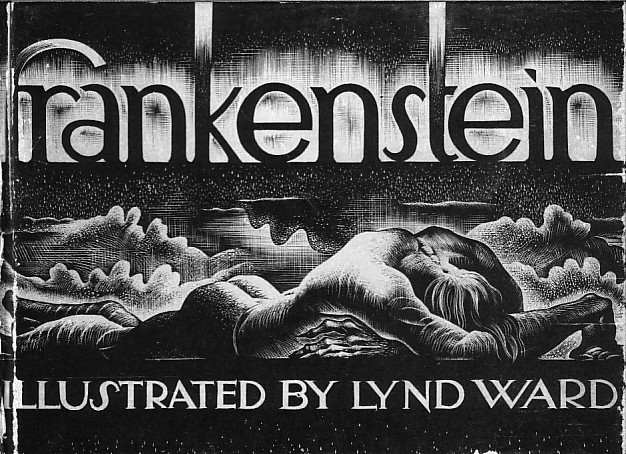Before Daniel Clowes and Adrian Tomine, before Frank Miller and Alan Moore, and even before Stan Lee and Jack Kirby, there was Lynd Ward — America’s first, real graphic novelist. The terms “visionary” or “pioneer” could be applied to Ward, but the truth is that he was making graphic novels way before it was cool, and probably before it was even thought possible to create such a thing. Between 1929 and 1937, he dared to tell dramatic adult stories with just a series of woodcut images and his own vision.
Born in 1905 in Chicago, Ward lived through some of the most tumultuous moments of the 20th Century, most of which found a way into his dynamic, wordless picture books, now widely regarded as the origins of the modern graphic novel. His stories included sociopolitical commentary on the inter-war atmosphere of dread — the sinking American economy, the meteoric rise of European fascism, and the effect of swift industrialization on the self-hood of the worker — as well as more thoughtful matters, such as the whether or not the soul could survive in the modern age, or the price of artistic ambition and greed.

Starting with Gods’ Man in 1929, Lynd Ward published six graphic novels and illustrated more than 200 other books, including a rather avant-garde edition of Mary Shelley’s Frankenstein. Having studied art in Leipzig in the late 1920s, the influence of German expressionism on Ward’s work is clearly visible. Without words, Ward had to create tension or dread or any other mood in his images purely through the placement of his characters within a scene. His art is highly charged and aesthetically beautiful, but also emotionally resonant.
His scenes feature geometric shapes and sharp lines, along with crosshatch shading and juxtaposition of light and dark, all of which create interesting, almost folkloric imagery. With its timeless imagery and themes, Ward’s work could be imagined coming from Edo Japan in the heyday of the ukiyo-e woodcut style.
Ward understood the power that one image could have over the human imagination. His wordless graphic novels, while not abstract in the usual sense, are still often metaphorical or ambiguous, and he relied entirely upon his imagery to say something truly important about the sort of man that was created by the 1920s and ’30s. It didn’t matter if those images could be explained, or should be explained; they stood alone, each of them a masterwork in its small way, mystifying the reader and challenging them to understand.

His particular method of “show, don’t tell” has been adopted by artists after his time, but rarely done so well and so powerfully as, for example, in the opening sequence of Gods’ Man. Ward inter-cuts images of a toiling artist with the same man sailing through a storm, arriving on a strange island (fittingly containing one small, bucolic village placed against the backdrop of a looming and quite menacing city), and paying a nearby man to gain entry to the village. The sense of discovery, and then immediately loss and compromise, involved in artistic expression have been brilliantly communicated, and all in just 10 images.
Lynd Ward made his last graphic novel for adults, Vertigo, in 1937, but his influence has been felt throughout the 20th Century, not least by anyone who enjoys expressive design and a strong line. One of his most famous fans was Allen Ginsberg (they even collaborated in 1978, when Ward created an original woodcut to accompany the “Moloch” section of Ginsberg’s poem Howl). Sadly, he usually received more attention for his work as a conventional illustrator than for his innovative work as a graphic novelist.
That is about to change. Those in artistic circles have known about Lynd Ward for decades, but 2011 may be the year that Ward finally gets the wider recognition he so richly deserves. In late 2010, the Library of America released a beautiful hardbound collection of all six of his graphic novels, along with a foreword by editor (and graphic novelist) Art Spiegelman — someone who can truly attest to the influence of Ward’s artistic style and use of history in his novels, both used in Maus. As Spiegelman says of Ward’s gifts, “There are ways in which one can argue that [Herman] Melville reinvented the novel, that Mark Twain invented forms that never existed before. In those terms, Lynd Ward can definitely hold his own.”

